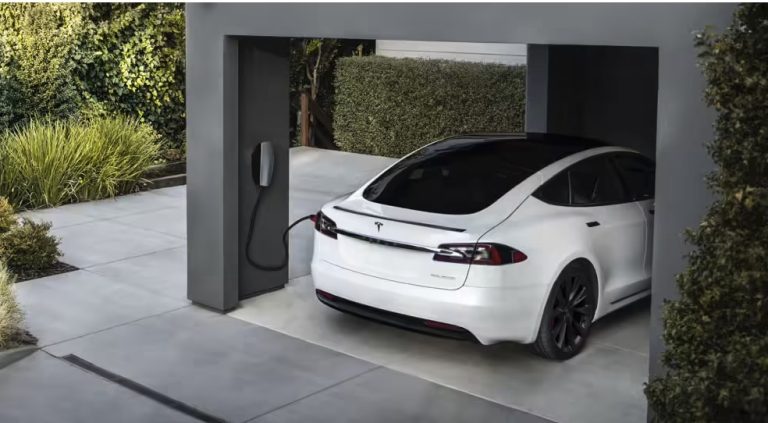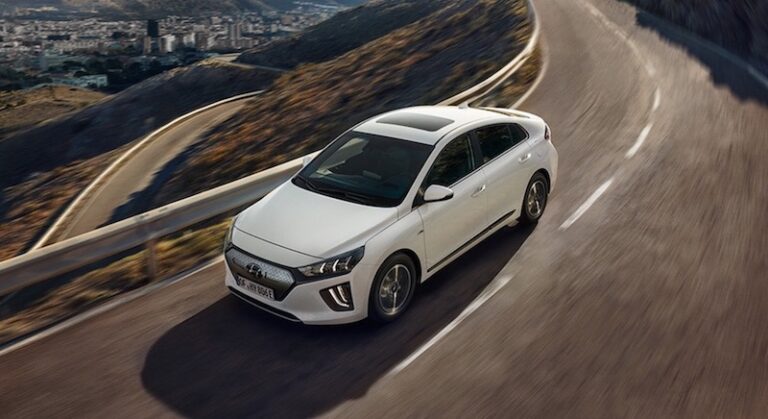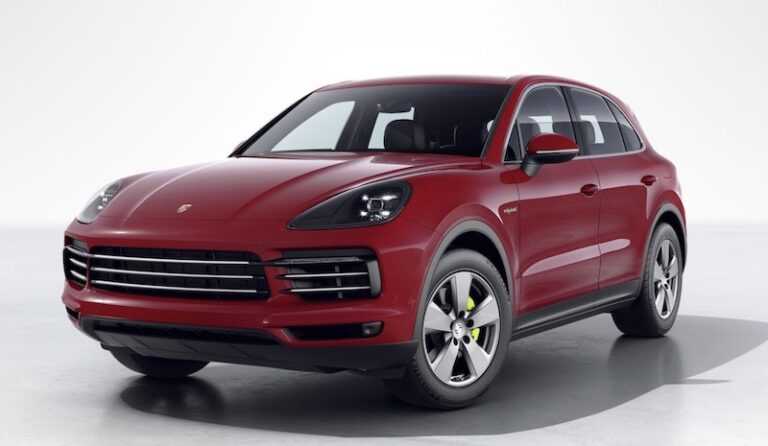Electric Cars: The Basics
For those of you new to zero-emission electric driving, we recommend a read of the following articles:
Sign up to the e-zoomed Electric Living newsletter
The Kia Niro PHEV SUV
Kia Corporation, the South Korean automotive manufacturer is fast developing a portfolio of lower-emission ‘eco’ vehicles, to include, zero-tailpipe emission battery-electric vehicles (BEVs), plug-in hybrid electric vehicles (PHEVs) and mild hybrids. The Korean automotive company is headquartered in Seoul, and it is South Korea’s second largest automotive manufacturer after the Hyundai Motor Company (Hyundai owns a 33.88% stake in Kia Corporation). At one point, the US automotive manufacturer, Ford Motor Company, also owned a stake in Kia.
Kia Corporation has been active in the European markets since 1991. The Kia electric vehicle (EV) portfolio includes both, battery-electric vehicle (BEV) and plug-in hybrid electric vehicle (PHEV) models:
- All-electric Kia Niro
- All-electric Kia EV6
- All-electric Kia EV6 GT
- All-electric Kia EV9
- All-electric Kia EV3
- All-electric Kia Soul EV
- Kia Niro Plug-In Hybrid
- Kia XCeed Plug-In Hybrid
- Kia Ceed Sportswagon Plug-In Hybrid
- Kia Sorento Plug-In Hybrid
- Kia Sportage Plug-In Hybrid
The Kia Niro concept car was first shown at the 2013 Frankfurt Auto Show. The Kia Niro compact SUV has been manufactured since 2016. The Kia Niro plug-in hybrid electric vehicle (PHEV) has been available since 2017.
The latest update to the Kia Niro plug-in hybrid is a welcome improvement for this relatively more affordable PHEV. Kia has increased the EV battery size and pure electric range, and reduced the tailpipe emissions. The updated Niro PHEV has a 11.1 kWh onboard EV battery with a zero-emission electric range up to 62 km. The previous model had a 48 km EV range.
Of course, the real-world electric range will be lower than the manufacturer quoted range, but the Niro plug-in electric car should be able to deliver up to 58 km. This is certainly a useful range, given that the majority of our day-to-day trips are school-runs, visit to the local high street, grocery store etc. And for shorter motorway commutes, the 58 km e-range could help lower motorway motoring costs.
Driving the PHEV on the e-mode will be far cheaper compared to using the petrol internal combustion engine. Depending on the cost of charging an electric car, expect electric driving to cost between 5 and 10 cents per km. We at e–zoomed encourage charging the electric car overnight at home, when the electricity tariff rates are cheaper. The electric vehicle (EV) has a 3.3 kW onboard charger and does not offer DC charging. The Kia PHEV will take up to 3 hours to fully charge.
We also recommend topping up the EV battery on a regular basis. Without keeping the EV battery charged, gaining from electric driving will be a challenge. Do keep in mind that the more often the pure electric mode is used, the better the efficiency of the electric vehicle i.e. improved fuel economy and lower motoring costs.
The Niro PHEV has a claimed fuel economy up to 0.9 l/100 km. The real-world fuel economy will be less efficient than the claimed economy, but better than the conventional combustion engine variant, if the e-mode in the PHEV is used on a regular basis!
The front-wheel drive Kia Niro plug-in hybrid combines a 1.6-litre petrol engine with an electric motor. The performance of the compact SUV will not win the Formula One, but it gets the job done. The EV can achieve 0-100 km/h in 9.8 seconds and has a top speed up to 161 km/h (maximum power: 180 bhp).
The EV offers a decent level of standard features and technology. In terms of practicality, despite the compact size, the PHEV does offer ample legroom and headroom for adults seated at the rear. However, the boot space (348 L) has been impacted due to the placement of the EV battery.
For those keen to gain experience in electric driving without committing to a pure electric car, the Kia Niro plug-in hybrid is worth consideration. The improved tailpipe emissions (23g CO2/km) also helps reduce the local air pollution.
Bottom-line, electric driving is good for the environment and the wallet!
| PROS | CONS |
|---|---|
| Improved exterior styling | Driving is not inspiring |
| Low tailpipe emissions | Small boot |
| Decent electric range | On board charger limited to 3.3 kW |
The Kia e-Niro PHEV SUV (credit: KIA)
| At A Glance | |
|---|---|
| EV Type: | Plug-In Hybrid Electric Vehicle (PHEV) |
| Vehicle Type: | SUV |
| Engine: | Petrol-Electric |
| Available In Ireland: | Yes |
| Variants (2 Options) |
|---|
| Kia e-Niro PHEV K3 (from € 39,700) |
| Kia e-Niro PHEV K4 (from € 42,700) |
| EV Battery & Emissions | |
|---|---|
| EV Battery Type: | Lithium-ion |
| EV Battery Capacity: | Available in one battery size: 11.1 kWh |
| Charging: | DC charging not available. Onboard charger: 3.3 kW AC (0% – 100%: 2hrs 55 mins) |
| Charge Port: | Type 2 |
| EV Cable Type: | Type 2 |
| Tailpipe Emissions: | 23 g (CO2/km) |
| Warranty: | 7 years or 160,000 km |
| Average Cost Of Residential Charging | |
|---|---|
| Battery net capacity : 8.8 kWh | € 2.10 |
| Battery net capacity : 11.6 kWh | € 2.78 |
| Battery net capacity : 12.0 kWh | € 2.87 |
| Battery net capacity : 13.10 kWh | € 3.14 |
| Battery net capacity : 14.10 kWh | € 3.37 |
- Note 1: The average cost of residential electricity in Ireland varies depending on the region, supplier and type of energy used. An average for Ireland is 23.97 cents/kWh.
- Note 2: Not all EV manufactures make available the data on net EV battery capacity, and in a number of instances the EV battery capacity advertised, does not state if it is gross or net capacity. In general, usable EV battery capacity is between 85% to 95% of the gross available capacity.
| Charging Times (Overview) | |
|---|---|
| Slow charging AC (3 kW – 3.6 kW): | 6 – 12 hours (dependent on size of EV battery & SOC) |
| Fast charging AC (7 kW – 22 kW): | 3 – 8 hours (dependent on size of EV battery & SoC) |
| Rapid charging AC (43 kW): | 0-80%: 20 mins to 60 mins (dependent on size of EV battery & SoC) |
- Note 1: SoC: state of charge
| Dimensions | |
|---|---|
| Height (mm): | 1545 |
| Width (mm): | 1805 |
| Length (mm): | 4355 |
| Wheelbase (mm): | 2700 |
| Turning Circle (m): | N/A |
| Boot Space (L): | 348 |
| 1.6 GDi PHEV | |
|---|---|
| EV Battery Capacity: | 11.1 kWh |
| Pure Electric Range (WLTP): | 62 km |
| Electric Energy Consumption (kWh/km): | 13.6 – 13.5 |
| Fuel Consumption (l/100 km): | 0.9 |
| Charging: | DC charging not available. Onboard charger: 3.3 kW AC (0% – 100%: 2hrs 55 mins) |
| Top Speed: | 161 km/h (120 km/h EV only) |
| 0-100 km/h: | 9.8 seconds |
| Drive: | Front-wheel drive (FWD) |
| Electric Motor (kW): | N/A |
| Max Power (bhp): | 180 |
| Torque (Nm): | 265 |
| Transmission: | Automatic |
| Seats: | 5 |
| Doors: | 5 |
| Kerb Weight (kg): | 1,594 |
| Colours: | 9 |
| NCAP Safety Rating: | Five-Star |
The Pros For Electric Cars
| Pros: Electric Vehicles (EVs) | |
| Lower air pollution: | One can never overestimate the negative impact of air pollution on the health of individuals, in particular, the vulnerable i.e. the children and the elderly. In Ireland, we have witnessed a significant increase in air pollution over the past decade, and yes, petrol and diesel tailpipe emissions have contributed to the worsening air quality across all our villages, towns and cities. Road transportation, though not the only source of pollutants, is a leading source, contributing up to 30%. Electric vehicles help reduce tailpipe emissions i.e. leading to improved air quality. Pure electric cars have no tailpipe, hence the expression ‘zero-tailpipe emissions’ or ‘zero-emissions’. PHEVs do have tailpipe emissions, given the hybrid nature of the vehicle (ICE and electric), but have far lower emissions than a conventional petrol or diesel car. Moreover, when a PHEV is driven on electric mode, the tailpipe emissions are zero! So bottom-line, both BEVs and PHEVs help improve air quality! |
| Lower running costs: | It is a misconception that electric cars are more expensive than petrol and diesel cars. In fact, when electric cars costs are assessed on a life cycle basis, it is clear that EVs are cheaper to drive per km than internal combustion engine (ICE) vehicles. For a start, charging an EV battery can cost as little as 5 €, and in most cases less than 10 €. However, refuelling a tank of fuel can cost up to 120 € (if not more!). An EV costs between 5 and 10 cents per km to drive, significantly lower compared to the cost of driving a petrol or diesel car. |
| Lower maintenance costs: | This is applicable only for BEVs. Pure electric cars have far fewer moving parts compared to an internal combustion engine (ICE) and therefore there is less that can go wrong i.e. lower maintenance costs. |
| Lower risk of breakdown: | Given the fewer moving parts in an electric car, it is not surprising that EVs have a lower probability for a breakdown compared to petrol or diesel vehicles. Most EV drivers have become astute at ‘topping up’ the EV battery on a regular basis to avoid the risk of being stranded due to an empty EV battery, one of the reasons for seeking breakdown assistance. |
| Convenience of charging at home: | Convenience: an EV can be charged at the convenience of your own home or office (no need to visit a petrol station!). In fact, most EVs are charged overnight at home, when the energy prices are the cheapest! |
| Lower energy price volatility: | EV charging costs have a lower price volatility and lower risk of price inflation, compared to petrol prices (petrol prices continue to negatively impact household finances as fuel prices increase). |
| Solar panels can significantly reduce charging costs: | Residential solar panels can be used to lower the cost of charging. Using residential PV solar, the cost of generating and consuming electricity is nominal, if not free (apart from the upfront costs). Both residential and commercial solar installations (for business premises) are ways to hedge against energy price inflation and achieve ‘well-to-wheel’ zero-tailpipe emissions. |
| Lower noise pollution: | In general, electric cars are silent with an in-built artificial noise generator primarily for pedestrian safety. The lower noise from EVs help improve the quality of our living environment, in particular, those living close to busy roads and thoroughfares. |
| Instant torque: | Yes, electric vehicles (EVs) have better torque performance than internal combustion engines, hence the ‘torqueof the town’! If in doubt, look at a traffic light that has both these types of cars. As the signal changes to green, the electric car will quickly leave behind the diesel and petrol cars. The primary reason for the superior acceleration in electric cars, is that, electric vehicles deliver ‘peak or maximum torque’ instantaneously, producing immediate acceleration. However, petrol and diesel cars take time to reach maximum or peak torque. In particular, diesel cars are known for being sluggish. Bottom-line, the better torque performance of electric cars, further contributes to the ‘fun factor’ in driving EVs compared to conventional cars. |
| Better for the environment: | Yes, apart from air pollution, in general, electric vehicles are better for the environment, given the lack of dependence on polluting fossil fuels. |
The Cons For Electric Cars
| Cons: Electric Vehicles (EVs) | |
| Retail prices expensive: | It is true, in that, EVs are still expensive in regards to the retail price, compared to an equivalent petrol/ diesel car. However, the past few years has witnessed a reduction in the prices for EVs, along with the emergence of many affordable EV models. Moreover, aspiring owners of EVs have been able to take advantage of public grants. In our view, as the EV sector continues to mature with increased manufacturing volumes, consumer will gain from the inevitable price reduction as a result of the increased economies of scale. Moreover, the best way to acquire a car, is usually through a competitive financing plan like a lease, contract hire etc, making the acquisition of an EV affordable for many. |
| Limited DC charging infrastructure: | Though 80% of EV charging is done overnight at home, public EV charging infrastructure remains a focal point for debates and aspiring/ current owners of EVs. In Ireland the public EV charging network is growing (2,000 charging points, mostly in urban areas). However, we agree that rapid DC charging infrastructure still needs to be deployed more widespread, helping EV drivers achieve a 0% – 80% EV battery charge in under 30 minutes. |
| Limited choice of EVs: | There is no doubt that there has been a significant increase in the number of electric vehicles (EVs) that have been introduced over the past three years. However, the number of available pure electric cars are still limited in comparison to petrol and diesel vehicles. As global automotive manufacturers ramp-up the development and production of EVs, we expect the ‘consumer choice’ to widen significantly. |
| Limited availability of used EVs: | Given the relatively nascent nature of the EV sector, it is not surprising that the used electric car market is still very small. We do expect the used EV marketplace to improve significantly in the coming years, giving aspiring EV owners a vast choice at competitive prices. |
While e-zoomed uses reasonable efforts to provide accurate and up-to-date information, some of the information provided is gathered from third parties and has not been independently verified by e-zoomed. While the information from the third party sources is believed to be reliable, no warranty, express or implied, is made by e-zoomed regarding the accuracy, adequacy, completeness, legality, reliability or usefulness of any information. This disclaimer applies to both isolated and aggregate uses of this information.






























